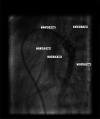Transcatheter closure in preterm infants with patent ductus arteriosus: feasibility, results, hemodynamic monitoring and future prospectives
- PMID: 37932790
- PMCID: PMC10629028
- DOI: 10.1186/s13052-023-01552-2
Transcatheter closure in preterm infants with patent ductus arteriosus: feasibility, results, hemodynamic monitoring and future prospectives
Abstract
Ductal patency of preterm infants is potentially associated with long term morbidities related to either pulmonary overflow or systemic steal. When an interventional closure is needed, it can be achieved with either surgical ligation or a catheter-based approach.Transcatheter PDA closure is among the safest of interventional cardiac procedures and it is the first choice for ductal closure in adults, children, and infants weighing more than 6 kg. In preterm and very low birth weight infants, it is increasingly becoming a valid and safe alternative to ligation, especially for the high success rate and the minor invasiveness and side effects. Nevertheless, being it performed at increasingly lower weights and gestational ages, hemodynamic complications are possible events to be foreseen.Procedural steps, timing, results, possible complications and available monitoring systems, as well as future outlooks are here discussed.
Keywords: Patent ductus arteriosus; Preterm infants; Transcatheter closure.
© 2023. The Author(s).
Conflict of interest statement
Dr Gianfranco Butera is proctor for Abbott Laboratories. Gaia Francescato, Daniela Doni, Giuseppe Annoni, Irma Capolupo, Elena Ciarmoli, Iuri Corsini, Italo Francesco Gatelli, Sabrina Salvadori and Alberto Testa declare no competing interests.
Figures





References
Publication types
MeSH terms
LinkOut - more resources
Full Text Sources

